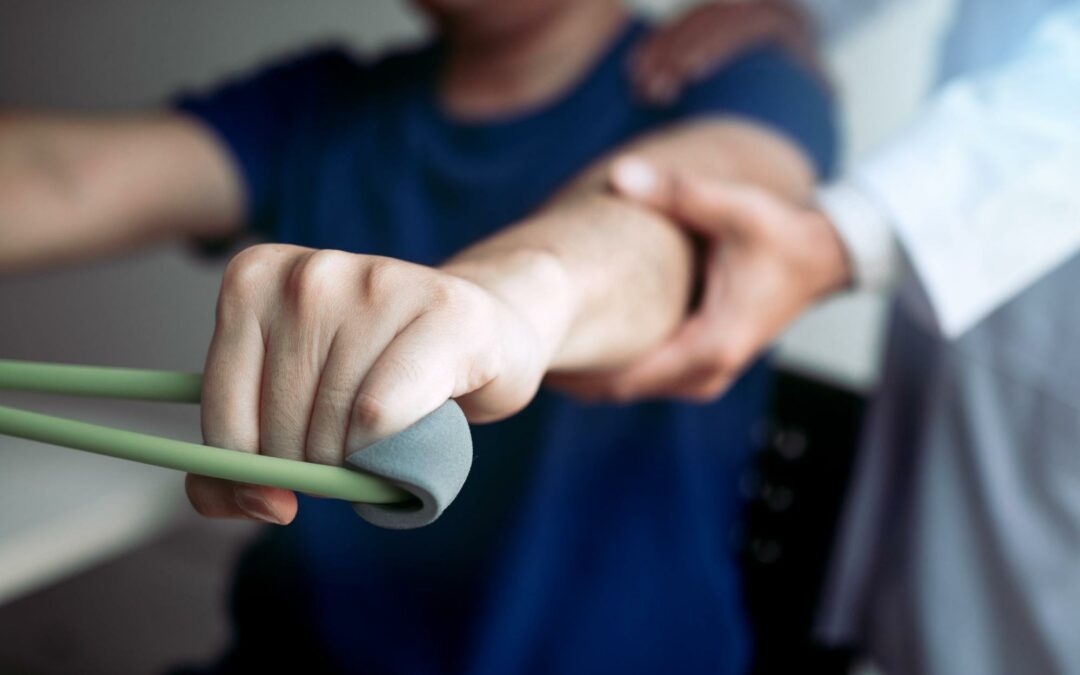
by targetmarket | Jul 15, 2024 | Heart Health
If you’ve recently experienced a heart attack, heart surgery, or been diagnosed with heart disease, your doctor has likely recommended cardiac rehabilitation. This medically supervised program is designed to help you recover and improve your cardiovascular health through exercise, education, and lifestyle modifications. While cardiac rehab may seem like an added burden during an already challenging time, it plays a crucial role in your recovery and long-term well-being. Here are some key reasons why cardiac rehabilitation is so important: Improved Heart Function and Reduced Risk of Future Events Cardiac rehab exercises are tailored to gradually increase your physical activity levels in a safe and controlled environment. This structured approach helps strengthen your heart muscle, improves circulation, and reduces the likelihood of future heart attacks or complications. Better Quality of Life By improving your physical fitness, strength, and endurance, cardiac rehab can help you regain independence and make daily tasks easier. Many patients report having more energy, less shortness of breath, and an overall improved quality of life after completing a rehab program. Education and Support In addition to exercise, cardiac rehab provides valuable education on heart-healthy living. You’ll learn about nutrition, stress management, medication adherence, and lifestyle modifications to reduce your risk factors for heart disease. The program also offers emotional support and counseling to help you cope with the physical and psychological challenges of recovering from a heart event. Supervised Monitoring Cardiac rehab takes place under the close supervision of healthcare professionals, including doctors, nurses, exercise physiologists, and nutritionists. They monitor your progress, adjust your regimen as needed, and ensure your safety during... 
by targetmarket | Jun 28, 2024 | Heart Health
Maintaining good cardiac health is essential for a long and fulfilling life. Your heart is the engine that keeps your body running smoothly, so it’s crucial to take care of it. Fortunately, improving your cardiac health doesn’t have to be complicated. By implementing a few simple lifestyle changes, you can significantly reduce your risk of heart disease and improve your overall well-being. At Minimally Invasive and Bloodless Heart Surgery with Dr. Ciuffo we are here with five easy steps to get you started on the path to a healthier heart. 1. Stay Active Regular exercise is one of the best ways to promote cardiac health. Aim for at least 30 minutes of moderate-intensity aerobic activity, such as brisk walking, cycling, or swimming, most days of the week. Exercise helps strengthen your heart muscle, improves circulation, and lowers blood pressure and cholesterol levels, all of which are crucial for maintaining optimal cardiac health. Additionally, staying active can help manage stress and maintain a healthy weight, further reducing your risk of heart disease. 2. Eat A Heart-Healthy Diet What you eat has a significant impact on your cardiac health. Focus on consuming a balanced diet rich in fruits, vegetables, whole grains, lean proteins, and healthy fats. Minimize your intake of processed foods, sugary snacks, and foods high in saturated and trans fats, as these can contribute to heart disease risk factors such as high cholesterol and hypertension. Incorporating foods like oily fish, nuts, seeds, and leafy greens into your diet can provide essential nutrients that support heart health, such as omega-3 fatty acids, fiber, and antioxidants. 3. Manage Stress Chronic stress... 
by targetmarket | Jun 14, 2024 | Heart Health
Excessive salt intake has been linked to a range of health concerns, including high blood pressure, heart disease, stroke, and kidney problems. While salt is a natural flavor enhancer and essential nutrient, it’s all too easy to over consume in today’s processed food-heavy diet. In efforts to reduce salt, you also reduce your risk for a number of diseases and conditions. Reducing Salt In Your Diet Fortunately, there are numerous strategies and substitutions that can help you reduce salt intake without sacrificing flavor. Here at Minimally Invasive and Bloodless Heart Surgery with Dr. Ciuffo, we’ll explore some top tips and tricks to help you reduce salt in your diet while still enjoying delicious meals. 1. Read Labels And Choose Low-Sodium Options Awareness is the first step to reducing salt intake. Get in the habit of reading food labels and choosing low-sodium or sodium-free options whenever possible. Opt for products labeled “low sodium,” “reduced sodium,” or “no added salt.” Pay attention to serving sizes and compare different brands to find the lowest-sodium options available. 2. Flavor With Herbs And Spices Herbs and spices are a fantastic way to add flavor to your meals without relying on salt. Experiment with a variety of herbs such as basil, cilantro, rosemary, thyme, and oregano, as well as spices like cumin, paprika, turmeric, and chili powder. Fresh herbs can be added to salads, soups, and marinades, while dried spices can be used to season meats, vegetables, and grains. 3. Use Citrus Juices And Vinegars Citrus juices and vinegars can provide a tangy burst of flavor that enhances dishes without the need for salt. Squeeze... 
by targetmarket | May 31, 2024 | Blog
Have you ever wondered how your heart works tirelessly day in and day out, keeping you alive and kicking? It’s a remarkable organ, a powerful pump that never takes a break. At Minimally Invasive and Bloodless Heart Surgery with Dr. Ciuffo, we’re here to take a journey into the world of your heart, simplified for easy understanding. Meet Your Heart The heart is a muscular organ located slightly to the left of the center of your chest. It’s roughly the size of your fist and works non-stop to pump blood throughout your body. The Pumping Action Think of your heart as a pump with four chambers. The two upper chambers are called atria, and the two lower chambers are called ventricles. The right side of the heart receives blood low in oxygen from your body and pumps it to your lungs to get fresh oxygen. The left side of the heart receives oxygen-rich blood from your lungs and pumps it out to your body. The Blood Highway Blood travels through your body in blood vessels called arteries and veins. Arteries carry blood away from the heart, while veins carry blood back to the heart. It’s like a highway system, with blood flowing in two directions – away from and back to your heart. The Beat Goes On The heart beats rhythmically, creating a lub-dub sound. This sound is made by the opening and closing of the heart valves as blood flows through the heart. The lub is made when the valves between the atria and ventricles close, and the dub is made when the valves between the ventricles and... 
by targetmarket | May 15, 2024 | Heart Health
Heart disease in men and women remains the leading cause of death globally, impacting millions of lives each year. However, what often goes unnoticed is the distinct nature of this ailment in men and women. While heart disease affects both genders, the manifestation, symptoms, and outcomes can significantly differ between them. Here at Minimally Invasive and Bloodless Heart Surgery with Dr. Ciuffo, we understand these distinctions are crucial for early detection, effective treatment, and, ultimately, saving lives. 1. Symptoms Disguised One of the most striking differences when it comes to heart disease in men versus women lies in the way heart disease presents itself. Men typically experience classic symptoms like chest pain or pressure, radiating down the left arm. However, women may not exhibit these telltale signs. Instead, they might experience more subtle symptoms such as shortness of breath, nausea, extreme fatigue, or discomfort in the neck, jaw, or back. These differences often lead to misdiagnosis or delayed treatment in women, putting them at a higher risk of complications. 2. Risk Factors At Play Several risk factors contribute to the development of heart disease, but their impact can vary between genders. While factors like high blood pressure, high cholesterol, obesity, and smoking affect both men and women, certain conditions like diabetes, metabolic syndrome, and mental stress tend to pose a higher risk for women. Hormonal changes, particularly during menopause, also play a significant role, altering women’s cardiovascular health. 3. Unique Challenges In Diagnosis Diagnosing heart disease in women poses unique challenges. Traditional diagnostic tests like electrocardiograms (ECG) and stress tests may not always detect heart issues in women due...





